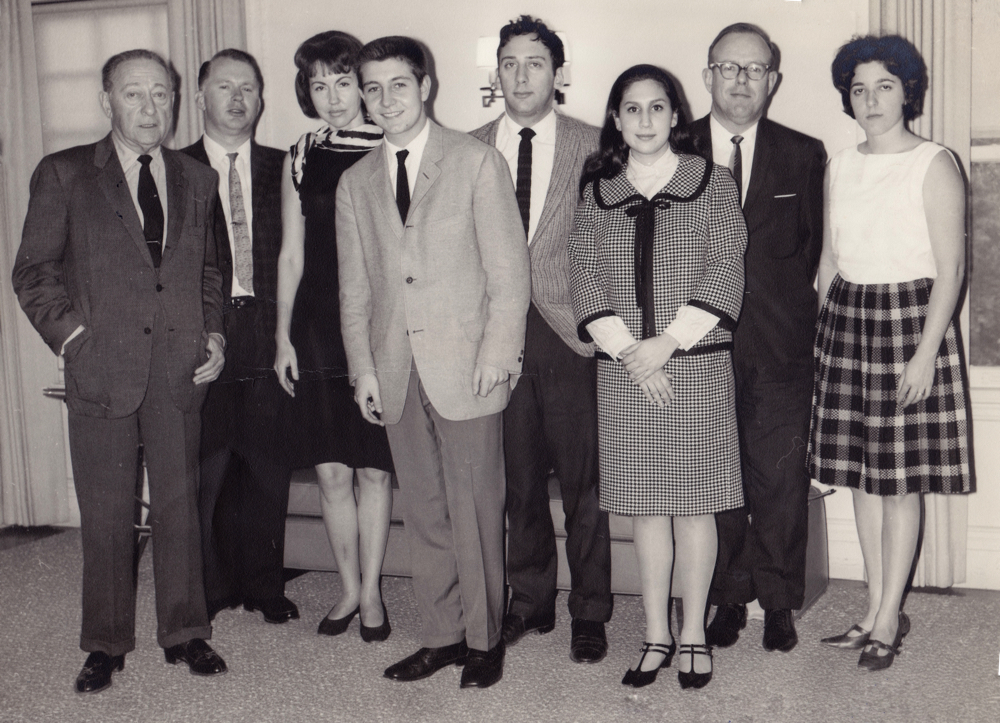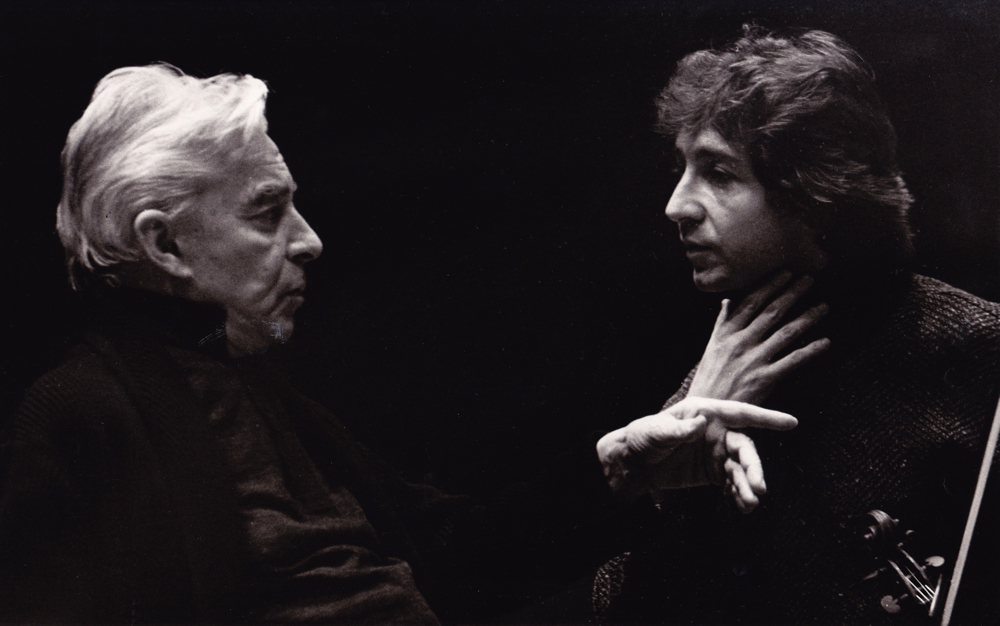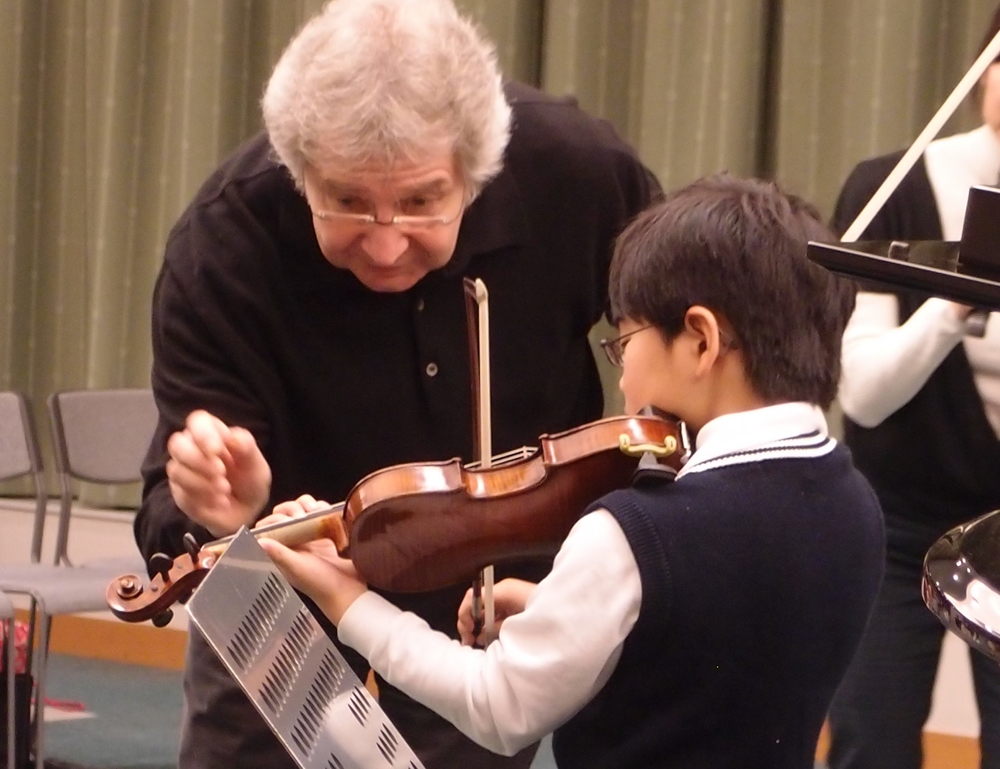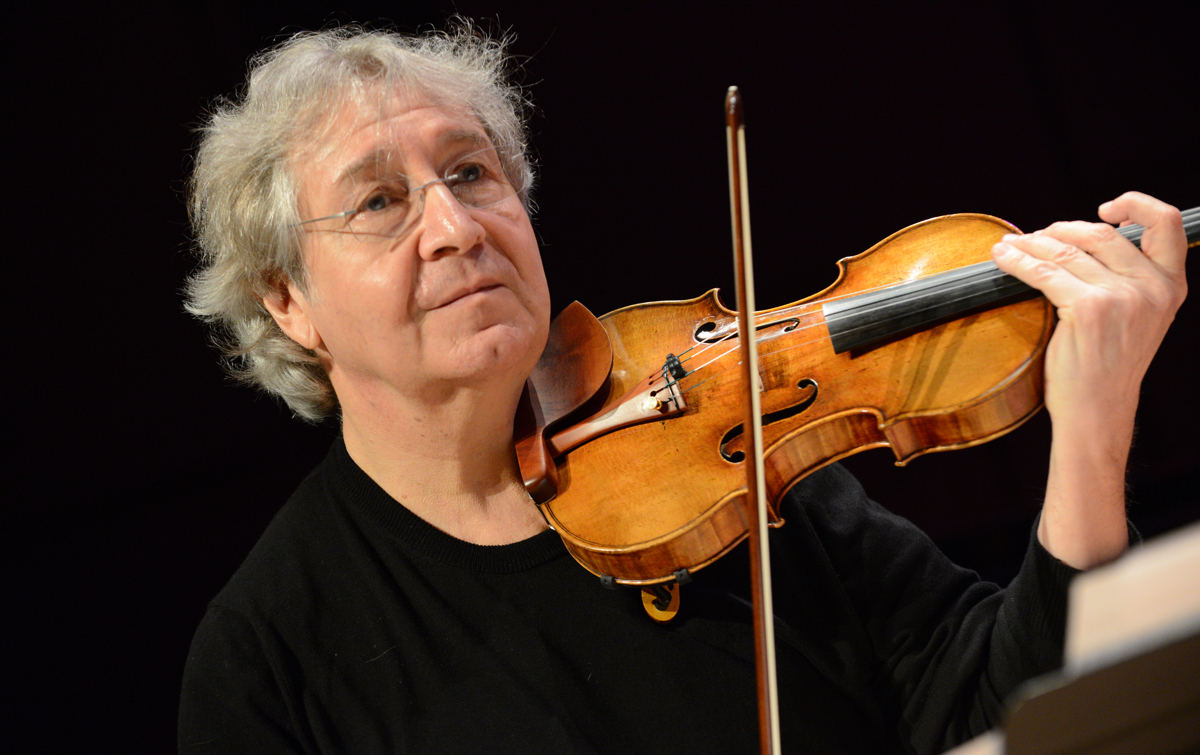A child prodigy, the French violinist Pierre Amoyal completed his studies at the Paris Conservatory with a First Prize aged 12 in 1961. Shortly after this, Jascha Heifetz spotted him and became his teacher for the following five years.
Heifetz, who died 30 years ago this month, was known to be an extremely demanding and impatient teacher, but Amoyal speaks about him with reverence and great affection. When I ask him if there is an episode in his long relationship with Heifetz that he particularly remembers, he answers immediately. ‘Yes, although Heifetz taught me a lesson for life almost every day. Heifetz was not only a great music teacher but also a teacher of life. He taught me a hard lesson that I’ll never forget. Before I left him, after five years, I went to his house to bid him farewell. He said: “You promise me two things before you go. The first thing is that you will never dine at Maxim’s in Paris.” I was baffled. “Of course not,” I replied, “but why?” “Because one day, after a concert at Pleyel, I invited a beautiful woman to dine at Maxim’s and, as I was not wearing a bow tie, they did not let me in. So, all my friends are forbidden to go there,” he replied. “Fine, don’t worry. I won’t go there,” I assured him and I kept that promise.

Heifetz (far left) and Amoyal (front row, center) aged 17. Photo courtesy Pierre Amoyal
‘Then I asked him what the second thing was. “You will never play with Herbert von Karajan,” was his sharp reply. In this case, I didn’t have to ask the reason. I knew that Heifetz had never gone back to play in Germany and he was very hurt about Karajan’s position during the war. I reassured him that I would do as he asked me. But then, 15 years later, Karajan invited me to play with him in Berlin. I thought that after all those years things had changed, Heifetz had probably reconsidered his position and he would understand how important it was for my career. So I went to play in Berlin. It was, of course, a wonderful experience. A few months later I kept calling Heifetz but could not get through. When I asked his secretary if anything was wrong, she replied: “Yes, of course. You played with Karajan; he will never speak to you again.” This happened three years before he died and unfortunately I never heard his voice again. He was teaching me another lesson. When you promise something, you have to keep your promise.’
‘Heifetz was not only a great music teacher but also a teacher of life. He taught me a hard lesson that I’ll never forget’
The quiver in his voice reveals how painful this reminiscence still is for him, although he does not question Heifetz’s actions. ‘I deserved it,’ he states. ‘I should have called him because I knew very well I was not holding a promise and I pretended I’d forgotten it. I wasn’t straightforward enough for such a man. Now, when I promise something, I do it.’

Amoyal performed with Karajan in the 1980s, breaking his promise to Heifetz, who never spoke to him again. Photo: © Siegfried Lauterwasser
Heifetz was already a major influence in Amoyal’s life, long before the two met in person. ‘When I was a little boy I took piano lessons, but the teacher complained that I was not practising enough and required that I have a piano at home,’ he recalls. ‘We lived in such a small house at the time that there was no space to put a piano. A friend of the family suggested that I try something smaller, like a violin. My mother brought me a recording of Heifetz playing Tchaikovsky’s Violin Concerto. I remember that day as if it were yesterday. I turned on the gramophone and after just a few seconds I felt that my life had changed. From the record came such an intense power of expression that I was moved and shocked at the same time. Of course, I didn’t know at the time that it was coming from Heifetz. I thought that every violin player could play like him! So I asked my mother to get me a violin and the next morning I was already practising. I’ve never stopped practising for five or six hours a day from that day on.’
‘A few years later when I was in Los Angeles and I played for Heifetz for the first time the Tchaikovsky Violin Concerto, my knees were shaking. He asked me what was wrong, but I didn’t want to tell him in front of the other students. I confessed it to him only during the lunch break: “You know, this is why I play the violin, because I heard you play those first notes and you have changed my life.”’
Amoyal attributes his success, which includes winning several awards (among them the Ginette Neveu, Paganini and Enescu prizes) and being the youngest musician ever to be appointed Professor at the Paris Conservatory, to Heifetz’s teaching – although he admits it was not always an easy relationship.
‘Heifetz was known to be an extremely hard teacher. He didn’t keep students for very long. He was quite impatient and difficult to handle’
‘He was known to be an extremely hard teacher. He didn’t keep students for very long. He was quite impatient and difficult to handle. I was 17 years old, I was serious, I practised my violin every day carefully, but I confronted him with an open mind. I’ve never tried to copy him. I was looking at a genius and I thought: “This is the greatest teacher that ever lived.” When I came back to Paris I was lucky to quickly start a big career, but at the same time I felt the need to teach. I told myself: “If I don’t teach now, I will forget half of what I’ve learned from him and I will forget the lessons he taught me about the generosity of being a teacher.” So, although I was busy playing many concerts, I was happy to have been given a fantastic position in Paris, because I developed my passion for teaching through Heifetz and it has never stopped ever since. I felt he was giving me so much that if I had the possibility to give myself as a teacher to my students as he did to me, I would probably also be a better person and a better artist. If I hadn’t studied with him, I would have probably focused exclusively on my career and I would have waited, like most teachers do, until I was 50 or 60 years old to start teaching.’

Amoyal teaching in Japan. Photo: courtesy Pierre Amoyal
Amoyal’s commitment to teaching is indisputable. He was Professor at the Paris Conservatory for ten years, at the Lausanne Conservatory for 27, and since 2013 he has taught at the Mozarteum in Salzburg. With such extensive teaching experience, how does he see the role of the teacher today. Has it changed?
‘That’s a very good question,’ he laughs shaking his head. ‘Of course, Heifetz’s ways of teaching were very old fashioned. After all, he’d learned from Leopold Auer. It was a different generation. You can’t be rough to a student today. The students’ parents would immediately sue the university where you’re teaching. You have to be very careful. You have to be not only a good teacher, but also a skilful diplomat. When I teach, I’m very careful not to touch the wrong switch. If I were using the same way of Heifetz, I would probably not be holding any official position anywhere.’
The 1717 ‘Kochanski’ Stradivari
Amoyal has spent most of his 50-year career with the same violin: the ‘Kochanski’ Stradivari, which celebrates its 300th anniversary this year. The violin spent a considerable time in Russia during the reign of Tsar Nicholas II, although there is no evidence that the tsar himself owned it, as has been suggested. According to Alfred Hill, it was initially owned by one of the Vielgorsky brothers, either Count Mikhail Yurievich (1788–1856) or Count Matvey (1794–1866), who also possessed the famous ‘Davidoff’ cello. It then passed to another Russian aristocrat, Count Mikhail Loris-Melikov (1825–1888), before being bought by Paul Kochanski (1887–1934), after whom it’s still named.
Amoyal recalls how he first encountered the violin. ‘When I started my career in Paris I played the “Provigny” Stradivari, which the French government had lent me. It was a “typical” Strad, with a very brilliant and bright tone, but I felt it was lacking deepness and roundness in the lower register. I dreamt of a Stradivari with the depth of a Guarneri “del Gesù”. Of course, I was maybe dreaming, but if you don’t dream in life, nothing happens. So, I went to all the great dealers – Hill, Beare, Vatelot, Francais – and I described to them the violin that I had in mind: fantastic high register, warm and generous medium, and very deep G string. I was shown several instruments but after a few years I was desperate because I hadn’t found “my” violin and they were even more desperate than me because they had shown me everything they had.

